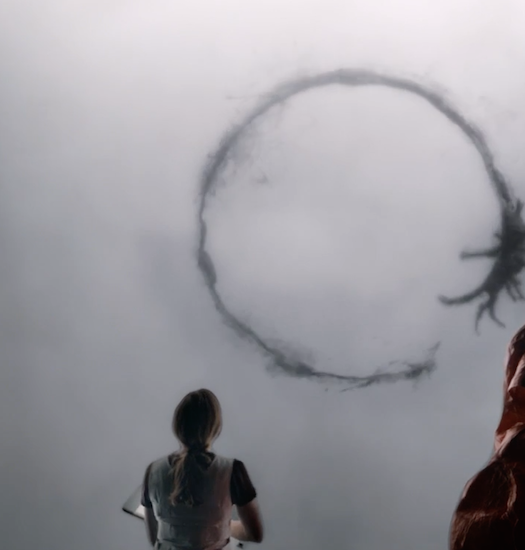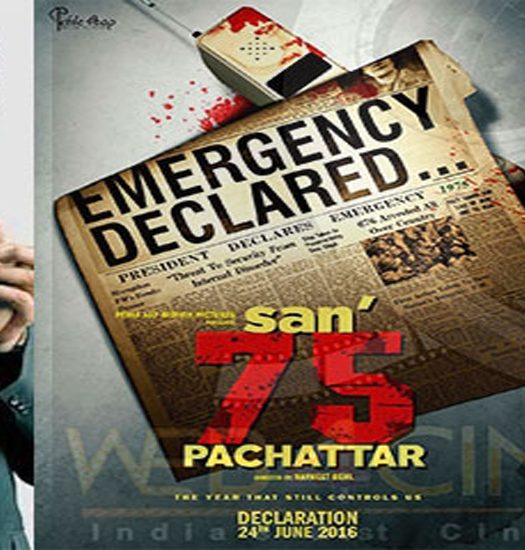We didn’t want Wade to be an overblown scientific fiction: Upamanyu
The growing perils of climate change are not alien to any of us. Closer home, Kolkata-based animator Upamanyu Bhattacharya and his fellow animators from National Institute of Design have adopted a unique approach to highlight this issue. Through their animated film Wade, this group of talented youngsters talk about the inequities and ecological chaos and the effects that it will lead to.
Instead of making, as Upamanyu puts it, ‘an over blown Sci-Fi’ animation film, which only a few would understand or care to watch, these young animators wrote a story complete with nature, humans and animals and let go of all the dialogues in the drafting stage. The group has also started a crowdfunding campaign on Wishberry to complete the film.
Here Upamanyu talks to Pandolin about the overwhelming response to their film in terms of funds, the making of Wade and why they chose animation to tell their story.

Upamanyu Bhattacharya
From the teaser, Wade looks like a work of magic realism, set in the future. Tell us about the film’s subject and how did it originate?
The film is set in a time when climate change has taken its toll. The sea level has risen, as projected by global warming theorists. The South of Kolkata has the Sundarbans which are home to indigenous people and huge wild life. If the Sundarbans go under water and Kolkata gets flooded, we theorize that most of the people would leave.The story focuses on some migrants from the Sundarbans who have moved to Kolkata and are trying to make a living in the skeletal remains of the city. They are in a ‘situation’ with the tigers who have also migrated to the city at the same time.
Mainly we came up with this idea after we read about how the Sundarbans are slowly going under water because of the rising sea levels. We read a lot of papers on this subject and how it is affecting the local population. We didn’t want the film to be an overblown scientific fiction. We wanted a story that was close to home to drive the point that whatever is happening, is pretty real.
We wanted a story that was close to home to drive the point that whatever is happening, is pretty real
How would you define the treatment of the film?
The visual scheme takes a lot cues from the art of Bengal. Except for the background, where we wanted to go with exaggerated realism. Those buildings are very recognizable, especially if you are from Kolkata. But they have this one extra edge, something off about them. They are a bit tilted or there are a lot of air conditioners cramped into the windows, probably displaying that as the temperatures soared, people got ACs rather than getting down to fix something more basic. We thought of keeping the tigers as believable as possible.
Was animation the apt choice considering the subject?
Yes, absolutely. Firstly, because you can pull off the idea that there is a massive tiger population in the city. You can do that with special effects as well, like in Life of Pi, but here we are trying to use the natural textures present in the environment. The tigers are a little too long, the people are too thin, thus driving more points home. It’s a caricature of what we think would become of things and people.
Sometimes you can make a better point using an illustration than a photograph. If we amplify the characters, we can make a better point, which animation allows.
READ: ANIMATION FILMMAKING – A STEP-BY-STEP GUIDE WITH GEETANJALI RAO

A still from Wade
Who is the target audience for this film?
For us, initially, the target group was a very Kolkata-based audience. In fact, the first few drafts of the film were in Bengali but then we did away with the language altogether. Hopefully everyone will be identify with it now. We made it for adult Indian audience as the film gets violent at a point. It is definitely not for children.
READ: CLASSICAL ANIMATION WILL NEVER DISAPPEAR BECAUSE ITS RESULTS ARE DIFFERENT
Which softwares have you’ll primarily worked on?
We are animating it on Photoshop, which is weird (since it’s not a conventional animating software) but yes, largely we are using the software to make the film. And then we are putting it all together using Adobe AfterEffects.
The film shows similarities to The Jungle Book and Life of Pi in terms of a kid and big cat relationship. Was it something that you’ll have deliberately played around with?
Not really. Once you watch the full film, you will know the reason behind the kid being there. There are many people in the scene who get eaten by the tiger and the only people remaining are a girl who is blind and this boy. We really wanted to talk about the imbalance and what will possibly happen to the ecosystem as a whole. And thus we needed a helpless kind of a stand-in who has no option but to wait and see what happens.
We really wanted to talk about the imbalance and what will possibly happen to the ecosystem as a whole

A still from Wade
Sound plays an important role in your film. How have you worked with sound and what were your references for designing it?
Yes, sound is very important. For the soundscape, we are using very urban mechanical sounds in order to make jungle sounds, so we are basically working the other way round by using metal sounds to create insect sounds, the jungle ambiance, et al. We are still working on the sound of the tigers because that is very important. They communicate amongst themselves and so we are studying a lot of footage to see how they communicate. And tigers don’t make much of a sound unless they have to. So we are dealing with lots of urban, inorganic sounds, but end up giving it a jungle feel and soundscape.
READ: BEGINNER’S GUIDE TO SOUND DESIGNING
Why did you’ll choose the crowdfunding route for the film? Did you’ll try approaching producers with the idea?
We didn’t try meeting producers and thought of crowdfunding because some of us are financially supporting the film using our savings or freelance money etc. Mainly we wanted to see if there is an audience for this adult-oriented animation film – how many people are interested in watching it, paying for it and supporting it. It gives us an idea about the potential audience for the product. And there are people who are not from a film background yet have been pretty encouraging about the film.
There are people who are not from a film background yet have been pretty encouraging about the film
What stage is the film currently at? Also, what is the distribution of funds for the various stages of filmmaking?
First we had to do a basic rough character animation, which will later be colored and given final touches. As of now we have completed the whole rough animation. All the characters have been made. We need to colour them now, put the background and do the final sound design. We mainly need the crowdfunding to get people on board to help us with colour designing manually.
The exact amount gathered is on Wishberry. Since we’ve gathered surplus amount, we are making people know that we will be using the encouraging amount to run the film campaign in different film festivals, once it’s ready.
READ: TIPS TO KICKSTART YOUR CROWDFUNDING CAMPAIGN

The team members (L-R) Kalp, Anwaar, Shreeya, Sharath, Saket, Gaurav, and Nikunj
Please tell us about the team working on the film.
The film is being made by nine animators – Kalp, Anwaar, Shreeya, Sharath, Saket, Gaurav, Nikunj, Deepti and myself. All of us are NIDians. Three of us graduated two years ago and work as freelance animators now and the others are current students who did their internship with us. It’s a collective effort by all of us.
We want a lot of local screenings especially in the area that the film talks about
Lastly, where do you see this film heading?
Firstly we want to gather momentum for such films at the film festival level to encourage more direct, actual production of animated short content. Secondly, and more importantly, we want a lot of local screenings especially in the area that the film talks about to get more organic reactions from people about what they feel about the subject matter. We have spoken to many people, did a lot of research, and realized how the relationship between people and tigers is very dense right now. The story is about those people and so we would definitely like to take the film there.
You can contribute to their crowdfunding campaign here



